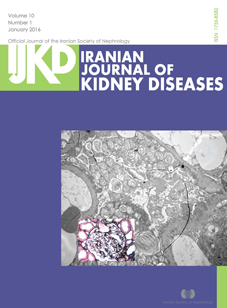Validation of Oxford Classification of Immunoglobulin A Nephropathy: an Iranian Experience
Abstract
Introduction. In 2009, the Oxford classification of immunoglobulin A (IgA) nephropathy was proposed by the working group of the International IgA Nephropathy Network and Renal Pathology Society. It established specific pathologic features that predict the risk of progression of disease. This study aimed to evaluate the interobserver reproducibility of the Oxford classification of IgA nephropathy between Iranian nephropathologists.
Materials and Methods. We included 100 patients with primary IgA nephropathy diagnosed between 2001 and 2011. Histologic slides were circulated among 4 pathologists. A score sheet was answered by each individual pathologist for each biopsy, according to the instruction of the Oxford classification. Reproducibility was determined for each variable, using intraclass correlation coefficient (ICC).
Results. The ICC values calculated for each major category of the Oxford classification were as follows: the highest score of 0.94 for tubular atrophy and interstitial fibrosis; 0.8 for glomerular basement membrane duplication, extracapillary proliferation, and segmental endocapillary proliferation; and 0.1 to 0.3 for arterial lesions, especially for hyalinosis of arterioles and intimal thickening of arcuate vessels and interlobar arteries.
Conclusions. The Oxford classification of IgA nephropathy is a useful tool and evidenced-based method with high interobserver reproducibility in pathology reporting. Our data suggest that Oxford classification may be used as a model for classification of other renal pathologies in the future.


